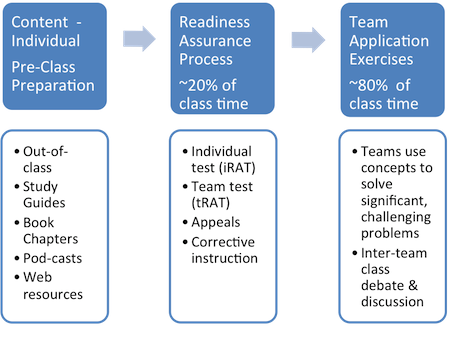Group activities are a great way to get all students engaged in learning. Students who are hesitant to speak up in class are often willing to participate in small groups. Groups activities offer students the opportunity to work together to solve problems and learn from one another.
Groups are highly effective for problem-solving and grappling with projects that are too big for a single student, but they must be well-designed, and students need to understand why they’re working in groups.
Cooperative learning and collaborative learning are strategies for encouraging students to learn from each other. Harvard University offers a brief look at the context and function of group and cooperative learning. Finally, we can share our rationale for group assignments, and make sure that all members are held accountable for the work.
One especially effective group work model is Team-Based Learning (TBL) a structured form of group learning, which relies on a series of in-class and out-of-class activities.

- For more on the TBL model and details for implementing it in your course, visit the Team-Based Learning Collaborative.
- Need help figuring out how to assess group work, Carnegie Mellon offers some useful suggestions, methods, and questions to consider.